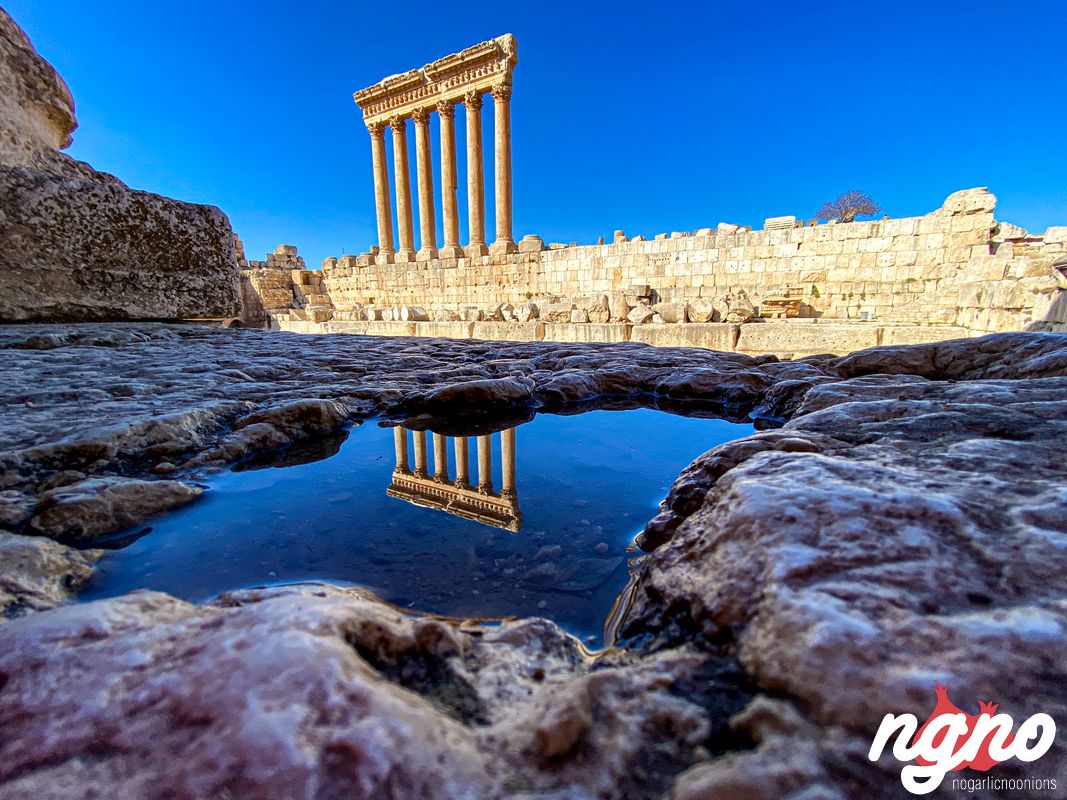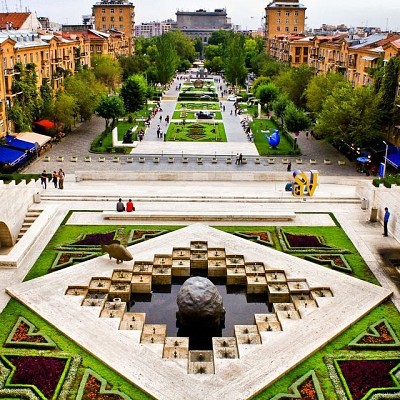(Wikipedia) The Tell Baalbek temple complex, fortified as the town's citadel during the Middle Ages, was constructed from local stone, mostly white granite and a rough white marble. Over the years, it has suffered from the region's numerous earthquakes, the iconoclasm of Christian and Muslim lords, and the reuse of the temples' stone for fortification and other construction.
The nearby Qubbat Duris, a 13th-century Muslim shrine on the old road to Damascus, is built out of granite columns, apparently removed from Baalbek. Further, the jointed columns were once banded together with iron; many were gouged open or toppled by the emirs of Damascus to get at the metal. As late as the 16th century, the Temple of Jupiter still held 27 standing columns out of an original 58; there were only nine before the 1759 earthquakes and six today.
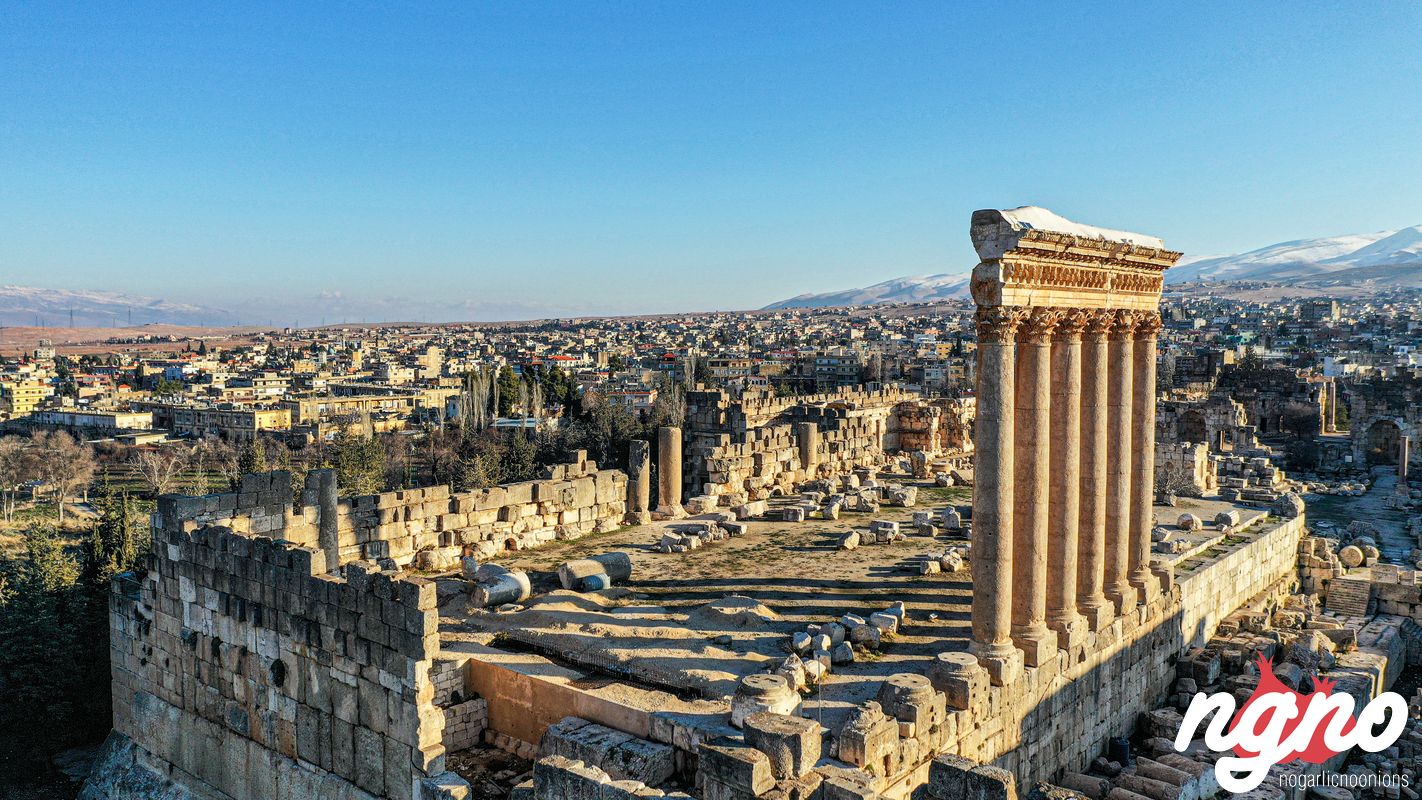
The complex is located on an immense raised plaza erected 5 m (16 ft) over an earlier T-shaped base consisting of a podium, staircase, and foundation walls. These walls were built from about 24 monoliths, at their lowest level weighing approximately 300 tonnes (330 tons) each. The tallest retaining wall, on the west, has a second course of monoliths containing the famous "Three Stones" (Greek: Τρίλιθον, Trílithon): a row of three stones, each over 19 m (62 ft) long, 4.3 m (14 ft) high, and 3.6 m (12 ft) broad, cut from limestone. They weigh approximately 800 tonnes (880 tons) each. A fourth, still larger stone is called the Stone of the Pregnant Woman: it lies unused in a nearby quarry 800 m (2,600 ft) from the town. Its weight, often exaggerated, is estimated at 1,000 tonnes (1,100 tons). A fifth, still larger stone weighing approximately 1,200 tonnes (1,300 tons) lies in the same quarry. This quarry was slightly higher than the temple complex, so no lifting was required to move the stones. Through the foundation there run three enormous passages the size of railway tunnels.
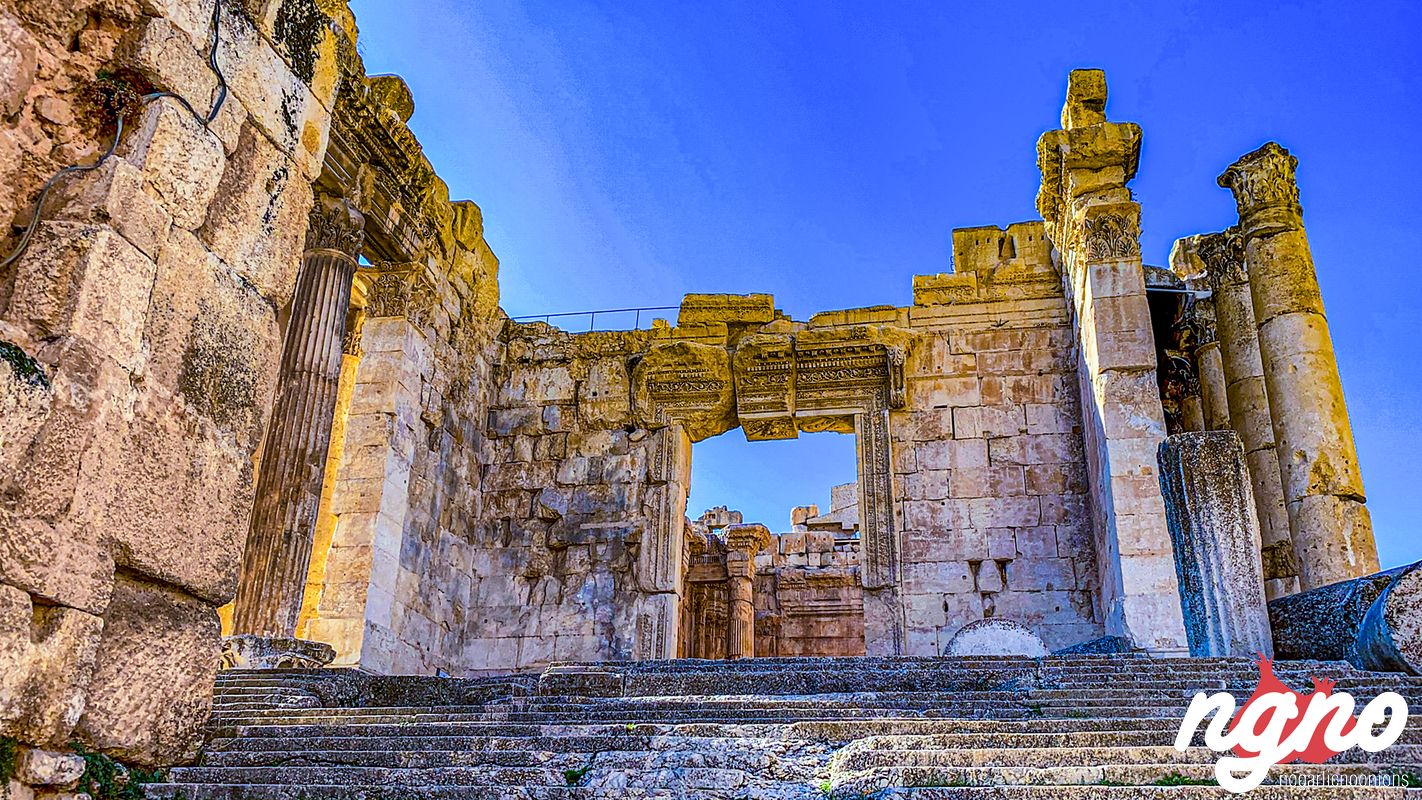
The temple complex was entered from the east through the Propylaeum (προπύλαιον, propýlaion) or Portico, consisting of a broad staircase rising 6.1 m to an arcade of 12 columns flanked by 2 towers. Most of the columns have been toppled and the stairs were entirely dismantled for use in the nearby later wall, but a Latin inscription remains on several of their bases stating that Longinus, a lifeguard of the 1st Parthian Legion, and Septimius, a freedman, gilded their capitals with bronze in gratitude for the safety of Septimius Severus's son Antoninus Caracalla and empress Julia Domna.

Immediately behind the Propylaeum is a hexagonal forecourt reached through a threefold entrance that was added in the mid-3rd century by the emperor Philip the Arab. Traces remain of the two series of columns which once encircled it, but its original function remains uncertain. Donne reckoned it as the town's forum. Badly preserved coins of the era led some to believe this was a sacred cypress grove, but better specimens show that the coins displayed a single stalk of grain instead.
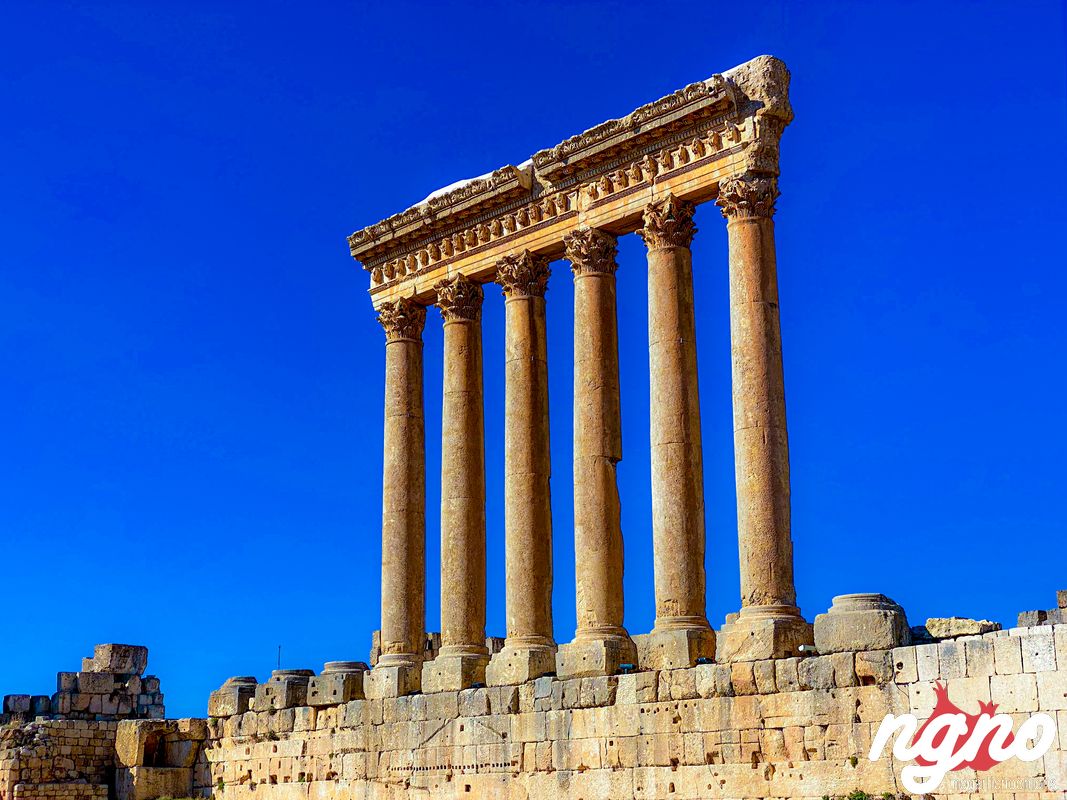
The rectangular Great Court to its west covers around 3 or 4 acres and included the main altar for burnt offering, with mosaic-floored lustration basins to its north and south, a subterranean chamber, and three underground passageways 5.2 m wide by 9.1 m high, two of which run east and west and the third connecting them north and south, all bearing inscriptions suggesting their occupation by Roman soldiers. These were surrounded by Corinthian porticoes, one of which was never completed. The columns' bases and capitals were of limestone; the shafts were monoliths of highly polished red Egyptian granite 7.08 m high. Six remain standing, out of an original 128. Inscriptions attest that the court was once adorned by portraits of Marcus Aurelius's daughter Sabina, Septimius Severus, Gordian, and Velius Rufus, dedicated by the city's Roman colonists. The entablature was richly decorated but now mostly ruined. A westward-facing basilica was constructed over the altar during the reign of Theodosius; it was later altered to make it eastward-facing like most Christian churches.


















